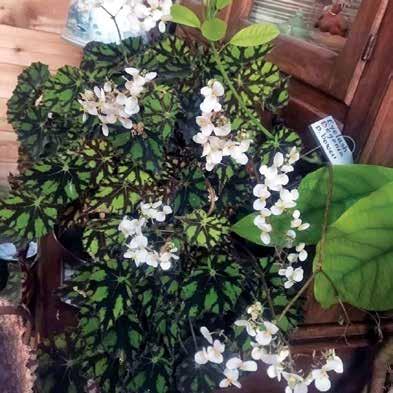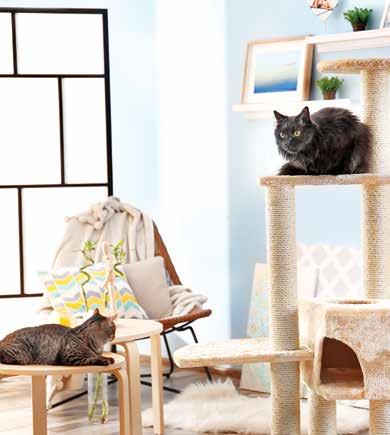
2 minute read
Year-Round Gardening
A Year-round Plant That Winks at You!

By Joyce Arleen Corson, Guest Columnist and Master Gardener
I received this plant as a gift from my late friend Edna Bente many years ago. She arrived with it and a twinkle in her eye.
The plant’s name is eyelace Rex begonia, or Rex begonia bowerae — not to be confused with the French race horse called Rex Begonia.
I have been very grateful to have had it all these years as it is a good performing flower. It is taken into the house in winter, where it happily lives in a pot. In summer, it becomes the garden design centerpiece for fire and ice hosta plants and a species of albomarginata, which is an annual.
Rex begonia is heavily used for breeding to create new exciting cultivars and is itself rarely on offer. The name applied to cultivated begonias is Rex. The wild species received its genus name, begonia, to honor the former French colony of Saint-Domingue (now Haiti) Gov. Michael Bégon, who lived from 1639-1710. The natural habitat is the shadowy area on the floor of the tropical forest or mountain side as ground cover. This creeping rhizomatous begonia grows up to 10 inches.
This plant is a good find because it is adaptive and has promising blossoms. It is welcoming in winter because it has eyelash-type, blooming white flowers on long stems. Each of the cultivars have their own identifying species name.
The small, heart-shaped leaves are deep emerald green with black edging and hairs on leaf edges and stalk. The purple-burgundy to nearly black markings may also create bands along the leaf veins. In late winter and early spring, it produces loose clusters of white or light pink male and female flowers that are held on thin pink stems above the foliage. The flowers are tiny, shell-shaped and produced on 4-6 inch long stalks. The species may be also propagated by seed.
Begonia bowerae cultivars are among the most preferred indoor plants for their rich leaf colors and because of their relatively rapid growth. Those with red leaves rival the more popular poinsettias for Christmas foliage.
To enhance the red leaf color of these begonias, keep the plant in an area with high humidity and away from direct sunlight. However, the location must be well lit, not dark. A shaded greenhouse or a window free of direct sun will suffice. Although this plant enjoys filtered light, it can take some sun in winter.
Normal room temperatures suitable for actively growing plants indoor should be 59 F or more. Give to these plants fresh air as much as possible and avoid drafts or cold air. They may suffer in dry air. For increased humidity, stand the pots on trays with moist pebbles or suspend saucers of water under hanging baskets.
Flowers are friends in the garden of life. In their heavenly home, may Edna and her husband Paul find a garden to explore. n

Shutterstock.com










